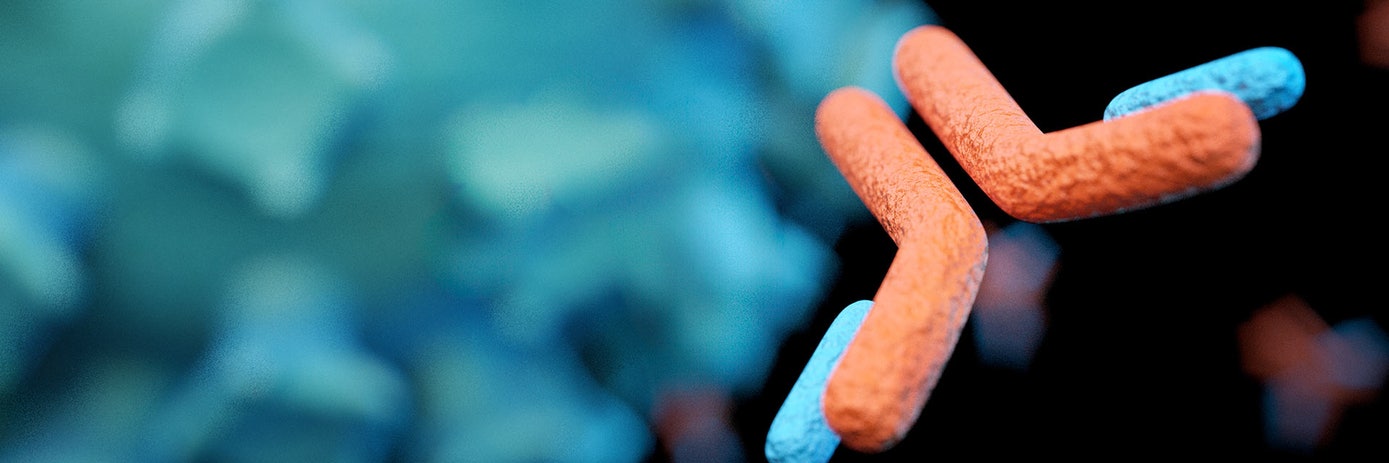CRISPR-edited cell lines are a valuable tool to validate your antibodies before you start an experiment. They help to ensure you are using high-quality reagents so you can be more confident in your results. We explain how you can use Revvity's edited cell lines for validation, aspects and limitations to be aware of, and how we can help you overcome them.
Using positive and negative controls
Positive and negative controls are essential components of the antibody validation toolkit. Positive controls give a good indication that the antibody is binding to the target antigen. However, if an antibody is non-specific, these results can be misleading. The negative control is used in conjunction to confirm specificity. It should consist of tissues or cells where the target protein is known to be absent.
Often, it is difficult to find biological material where there is adequate information on the level of protein expressed or if there is a complete lack of the target of interest. However, with the availability of CRISPR gene editing technology, knockout cell lines are fast becoming established as a standard control for antibody validation.
The challenges of antibody validation, and how we can help solve them
Challenge 1
- Creating your own knockout cell line: Although CRISPR gene editing technology is relatively simple, the reality of producing clonal cell lines in-house can demand significant time and resources. A simple knockout cell line can take upwards of 13 weeks, from the design of reagents to selecting successful clones and eventually characterizing and validating any resulting cell lines.
Solution 1
- Revvity's ready-made knockout cell lines: Our catalog of ready-made CRISPR gene-edited knockout cell lines have over 2500 gene targets available for immediate shipping. This extensive collection eliminates the lengthy development process, allowing researchers to focus on their experiments rather than cell line generation.
Challenge 2
- Accessing control material: Finding biologically relevant material is time-consuming. There are several considerations, including:
- Is the cell line authentic?
- Is it free of contamination?
- Is it at low passage?
- Does it exhibit the right biology?
Solution 2
- Wild-type cell lines: We have characterized the parental wild-type cell line used in our human knockout cell line range. For each gene target, there is an indication of the expected gene expression, so you can easily decide whether this cell background is relevant to your work.
- If you need more guidance on choosing the right cell line for your experiment, we explore these questions further in our blog: 5 tips for choosing the right cell line.
Challenge 3
- Biological background and genetic variation: Having positive and negative controls in the same biological background is a big bonus as this can make sample handling much more streamlined and results easier to interpret. Traditional sources of positive and negative controls include patient-derived materials or cell lines. These usually have high genetic variability, with many non-specific mutations acquired over the years. It is essential to know that the desired phenotype is not due to a background mutation.
Solution 3
- Characterized models provided with parental cell lines: Our human knockout cell lines come with a parental cell line as standard, enabling you to examine your gene of interest in isolation. Risks that results are due to off-target effects of gene editing (CRISPR) can be mitigated by studying multiple clones. At the same time, the parental cell line provides the ideal control, helping to ensure that findings are not due to other experimental variables.
Best practices
Optimization of experimental parameters for every new antibody is recommended to provide confidence in your results. Several groups have published papers on the essential considerations to help standardize the quality of the antibody validation process, including the European Monoclonal Antibodies Network1 and Protein Atlas2. You can read our tips on some of the key factors to keep in mind when you optimize and validate any new antibody.
Working with antibody providers
Antibody validation plays a key role in addressing concerns about the reproducibility of research results. There have been many articles highlighting the responsibility of both the individual researcher and the antibody provider to ensure that antibody validation is undertaken in an application-specific manner3,4. Many antibody providers, such as Biolegend, are turning to knockout cell lines as a means of addressing this subject in the manufacturing process.
Revvity's cell line engineering services
Whether you are an individual researcher looking to validate a single antibody or an antibody provider with an extensive catalog, Revvity's custom cell line engineering services can help you gain confidence in your valuable research tools. Our comprehensive capabilities, rigorous quality control processes, and expert scientific consultation mean that you receive precisely engineered cell models tailored to your specific antibody validation needs.
Our experienced team works closely with you to design, develop, and deliver the knockout or modified cell lines required for your application, with comprehensive documentation and validation data to support your research goals.
References:
- Roncador G, et al. The European antibody network's practical guide to finding and validating suitable antibodies for research. MAbs. 2016;8(1):27-36. doi: 10.1080/19420862.2015.1100787.
- Katona B, Lindskog C. The Human Protein Atlas and Antibody-Based Tissue Profiling in Clinical Proteomics. Methods Mol Biol. 2022;2420:191-206. doi: 10.1007/978-1-0716-1936-0_15.
- Bradbury, A., Plückthun, A. Reproducibility: Standardize antibodies used in research. Nature 518, 27–29 (2015). https://doi.org/10.1038/518027a
- Kahn RA, et al. Antibody characterization is critical to enhance reproducibility in biomedical research. Elife. 2024 Aug 14;13:e100211. doi: 10.7554/eLife.100211
For research use only. Not for use in diagnostic procedures.


































